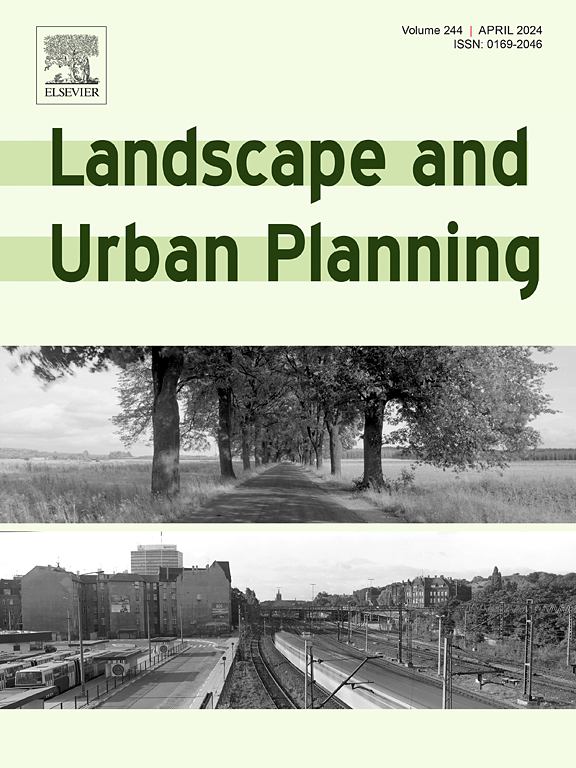High vulnerability of children’s wildlife-oriented outdoor activities to urbanization and digital media use
IF 9.2
1区 环境科学与生态学
Q1 ECOLOGY
引用次数: 0
Abstract
Children’s direct experiences with nature are crucial for their health, development, and the cultivation of pro-conservation attitudes and behavior. However, there is growing evidence that these experiences are declining across many regions worldwide, contributing to what is known as the extinction of experience. Urbanization and increased digital media use have been suggested as major drivers of this decline. While these factors likely affect different aspects of nature experiences in distinct ways, their differential impacts have yet to be formally tested. Using data from a nationwide survey of children’s and adolescents’ nature experiences in Japan, we investigated how urbanization and digital media use influence nature-based activities that require attention to and engagement with wildlife (wildlife-oriented outdoor activities) versus those that do not (general outdoor activities). We found that urbanization and digital media use reduce participation in wildlife-oriented outdoor activities, and that children in highly urbanized areas or with frequent smartphone use were less likely to engage in activities such as bird watching and insect catching. However, general outdoor activities like camping and wild swimming were more frequently reported among children living in more urbanized areas and those more engaged with digital media. These findings suggest that wildlife-related experiences are particularly susceptible to the negative effects of urbanization and increased digital media use compared to general outdoor activities, highlighting the need to consider the diversity of nature experiences when evaluating the extinction of experience and designing strategies to mitigate its impacts.
以野生动物为导向的儿童户外活动极易受到城市化和数字媒体使用的影响
儿童与大自然的直接体验对他们的健康、发展和培养保护环境的态度和行为至关重要。然而,越来越多的证据表明,在全球许多地区,这些体验正在减少,导致了所谓的体验灭绝。城市化和数字媒体使用的增加被认为是这种下降的主要驱动因素。虽然这些因素可能以不同的方式影响自然体验的不同方面,但它们的不同影响尚未得到正式测试。利用日本全国儿童和青少年自然体验调查的数据,我们调查了城市化和数字媒体的使用如何影响需要关注和参与野生动物的自然活动(以野生动物为导向的户外活动)与不需要关注和参与野生动物的自然活动(一般户外活动)。我们发现,城市化和数字媒体的使用减少了对野生动物户外活动的参与,高度城市化地区或频繁使用智能手机的儿童不太可能参与观鸟和捕捉昆虫等活动。然而,一般的户外活动,如露营和野外游泳,在生活在城市化程度较高的地区和那些更多地使用数字媒体的儿童中更为频繁。这些发现表明,与一般户外活动相比,与野生动物相关的体验特别容易受到城市化和数字媒体使用增加的负面影响,这突出表明,在评估体验消失和设计减轻其影响的策略时,需要考虑自然体验的多样性。
本文章由计算机程序翻译,如有差异,请以英文原文为准。
求助全文
约1分钟内获得全文
求助全文
来源期刊

Landscape and Urban Planning
环境科学-生态学
CiteScore
15.20
自引率
6.60%
发文量
232
审稿时长
6 months
期刊介绍:
Landscape and Urban Planning is an international journal that aims to enhance our understanding of landscapes and promote sustainable solutions for landscape change. The journal focuses on landscapes as complex social-ecological systems that encompass various spatial and temporal dimensions. These landscapes possess aesthetic, natural, and cultural qualities that are valued by individuals in different ways, leading to actions that alter the landscape. With increasing urbanization and the need for ecological and cultural sensitivity at various scales, a multidisciplinary approach is necessary to comprehend and align social and ecological values for landscape sustainability. The journal believes that combining landscape science with planning and design can yield positive outcomes for both people and nature.
 求助内容:
求助内容: 应助结果提醒方式:
应助结果提醒方式:


